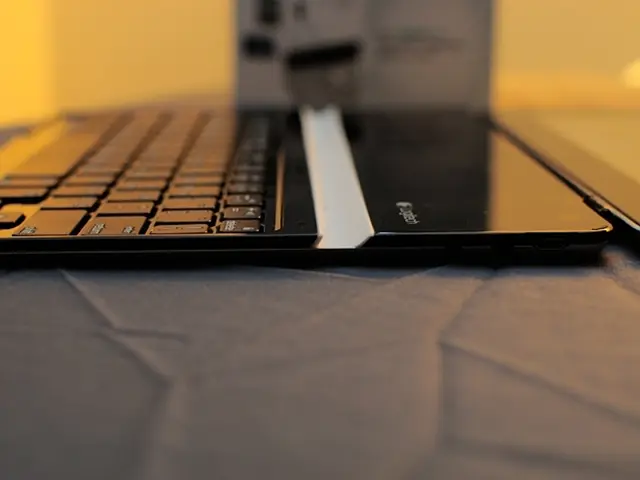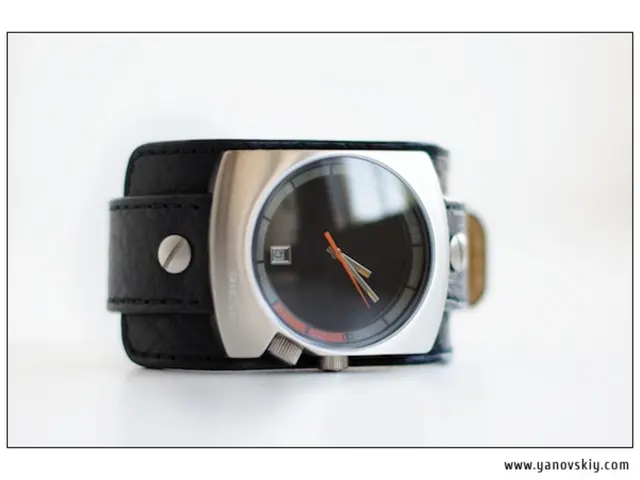Hiking Accessories: Trekking Poles
In the great outdoors, the humble trekking pole has become an essential tool for many hikers. Compared to a single walking stick or no poles at all, trekking poles offer numerous benefits that enhance stability, reduce fatigue, and improve overall performance on the trail.
One of the key advantages of trekking poles is their improved stability and balance. By providing two points of contact with the ground instead of one, they significantly reduce the risk of falls, particularly on rough, uneven, or steep terrain. This increased stability makes challenging routes more navigable, inspiring confidence in hikers [1][2][3].
Trekking poles also act as shock absorbers, reducing impact on joints such as knees, ankles, and hips. This is especially beneficial during downhill hiking, which can put extra strain on joints. Users report less fatigue and joint pain when using trekking poles [1][3].
Proper use of trekking poles encourages upright posture and natural walking mechanics, reducing wrist and shoulder fatigue while naturally aligning the spine and legs to prevent muscular imbalances. Certain designs, like Pacerpoles, support the whole arm and hand, further reducing fatigue [1].
Trekking poles also improve endurance and efficiency by allowing you to engage your upper body in the hiking effort. This can conserve leg energy and reduce overall fatigue during long hikes [1][2][4]. In addition, the use of poles activates multiple upper-body muscle groups, promoting overall strength, flexibility, and cardiovascular fitness [4].
Greater calorie burn is another advantage of using trekking poles. The additional upper-body engagement increases the intensity of walking, potentially resulting in significantly higher calorie expenditure than walking without poles [4].
In contrast, a single walking stick offers limited support and stability, primarily serving as a balance aid. Trekking poles provide a more balanced and supportive system, enhancing safety, comfort, and physical performance on the trail [1][2][3][4].
When using non-collapsible trekking poles, it's essential to stow them securely, often utilizing gear loops, attachment points, side loops, compression straps, or dedicated pole bungees on backpacks. Always secure your trekking poles to your pack when they're not in use.
Collapsible trekking poles are a popular choice due to their ability to fit inside or on a pack, making them a smart option for hikes where poles will only be used for part of the hike, such as steep descents. Hiking with collapsible poles offers the flexibility to use them only when needed.
Trekking poles can help during ascents by allowing the muscles of the upper body to assist the legs. They provide increased stability and can help prevent stumbles. Using trekking poles during descents can also reduce knee pain [1].
Two trekking poles offer symmetrical support that one walking stick does not. To prevent them from scarring rocks and contributing to trail widening, consider using rubber tips on your trekking poles. It is not recommended to carry trekking poles in your hands when not in use as it can be awkward and dangerous, especially with metal tips, which can pose a hazard if you trip, fall, or accidentally swing them too close to yourself or others.
In conclusion, trekking poles improve hiking by reducing fatigue and injury risk, increasing stability, promoting better posture, and providing a more effective full-body workout compared to a single walking stick [1][2][3][4]. Embrace the benefits of trekking poles and hike with confidence and comfort on your next adventure!
- Adopting trekking poles as part of an outdoor-living and home-and-garden lifestyle can enhance hiking performance, offering not only increased stability on varying terrains but also reducing joint stress and fatigue.
- Hikers who incorporate trekking poles into their hiking lifestyle can enjoy a multitude of advantages, including improved endurance, calorie burn, and overall strength and flexibility, making every trail more navigable and enjoyable.








